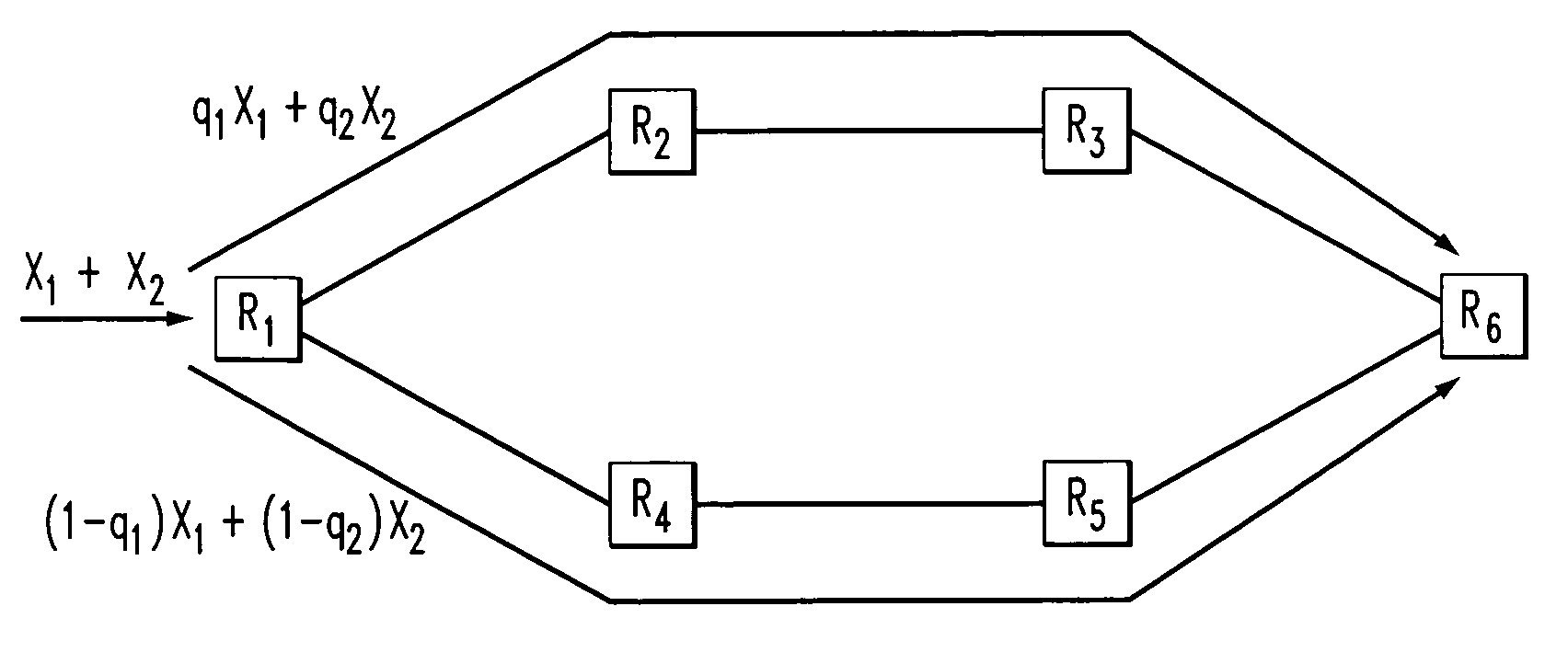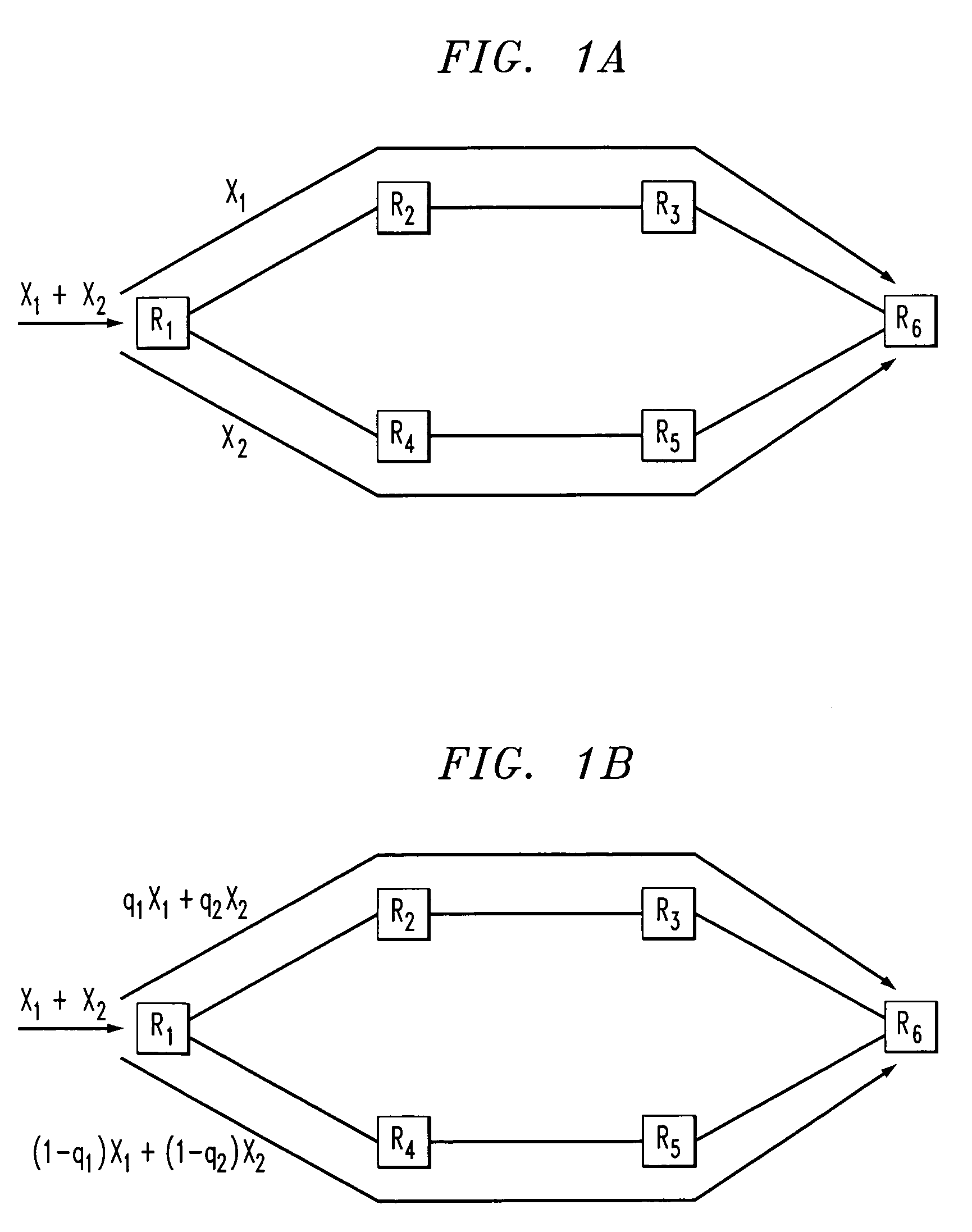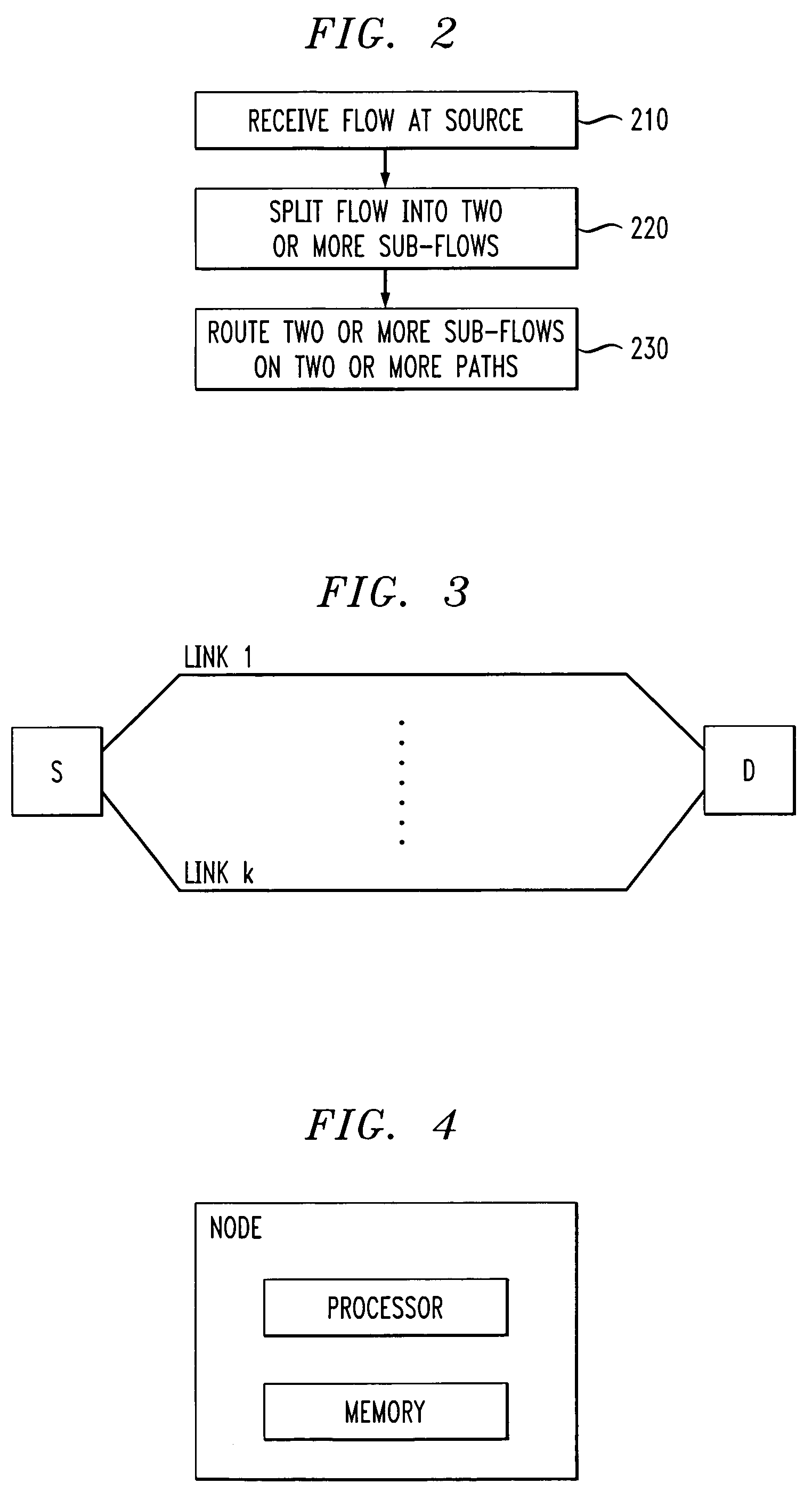Multi-path routing using intra-flow splitting
a multi-path routing and flow splitting technology, applied in data switching networks, frequency-division multiplexes, instruments, etc., can solve the problems of long-haul bandwidth being expensive, load imbalance, out-of-order arrival, etc., to reduce variance, loss probability, and bandwidth requirement. the effect of a relationship
- Summary
- Abstract
- Description
- Claims
- Application Information
AI Technical Summary
Benefits of technology
Problems solved by technology
Method used
Image
Examples
Embodiment Construction
[0017]The following description will illustrate the invention in the context of an exemplary packet-switched mesh network. It should be understood, however, that the invention is not necessarily limited to use with any particular type of network. The invention is instead more generally applicable to any network in which it is desirable to provide improved multi-path routing.
[0018]Further, it is to be understood that the phrase “traffic flow” (or, simply, “flow”) generally refers to a group (e.g., two or more) of packets that are to be routed in the network through the same source node / port and destination node / port pairing. A “path” in the network generally refers to a set of two or more nodes and one or more links between the nodes. “Nodes” generally refer to elements in the network at least capable of transferring packets. “Links” generally refer to connections between the nodes.
[0019]As will be illustratively explained in the sections of the detailed description below, principles...
PUM
 Login to View More
Login to View More Abstract
Description
Claims
Application Information
 Login to View More
Login to View More - R&D
- Intellectual Property
- Life Sciences
- Materials
- Tech Scout
- Unparalleled Data Quality
- Higher Quality Content
- 60% Fewer Hallucinations
Browse by: Latest US Patents, China's latest patents, Technical Efficacy Thesaurus, Application Domain, Technology Topic, Popular Technical Reports.
© 2025 PatSnap. All rights reserved.Legal|Privacy policy|Modern Slavery Act Transparency Statement|Sitemap|About US| Contact US: help@patsnap.com



